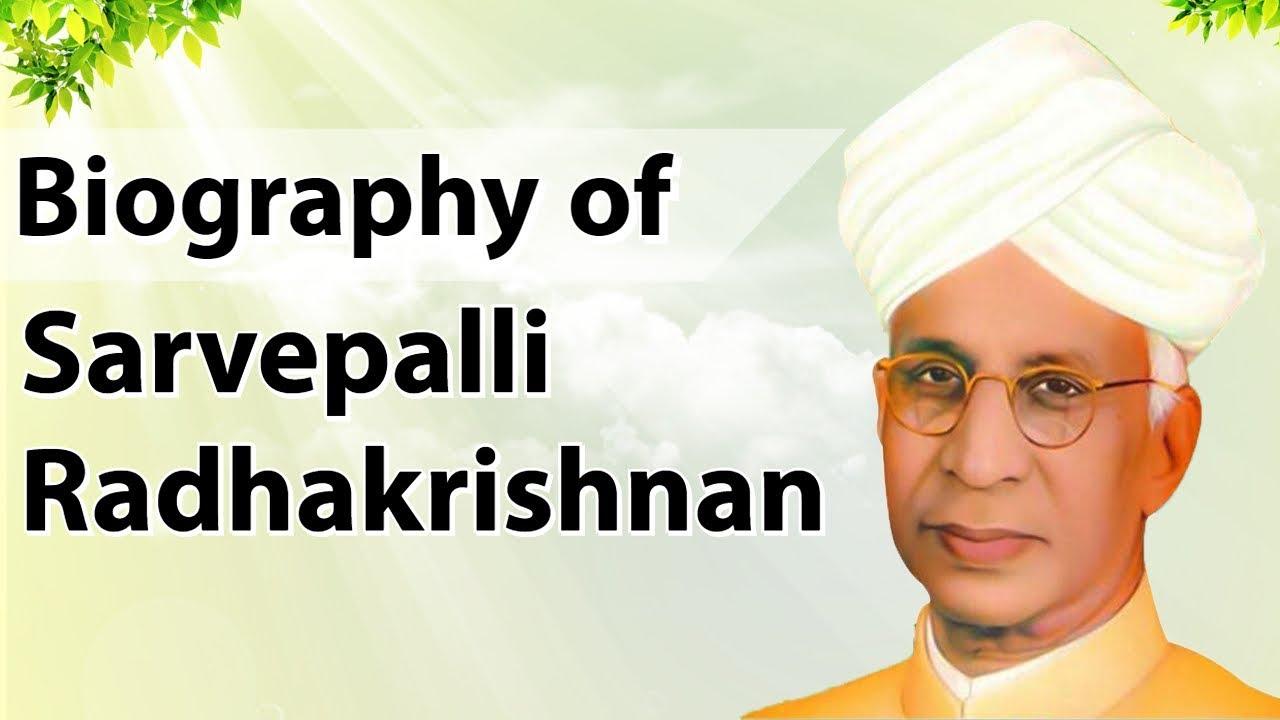Table of Contents
EARLY LIFE
- Sarvepalli Radhakrishnan was born on 5 september 1888 in a Telugu-speaking Niyogi Brahmin family, in Tiruttani in Madras Presidency.
- His father’s name was Sarvepalli Veeraswami and his mother’s name was Sarvepalli Sita . His early years were spent in Thiruttani and Tirupati.
- His father was a subordinate revenue official in the service of a local zamindar (local landlord). His primary education was at K.V High School at Thiruttani. In 1896 he moved to the Hermansburg Evangelical Lutheran Mission School in Tirupati and Government Higher Secondary School, Walajape.
EDUCATION
-
- Radhakrishnan was awarded scholarships throughout his academic life. He joined Voorhees College in Vellore but switched to the Madras Christian College at the age of 17.
- He graduated from there in 1906 with a Voorha master’s degree in Philosophy, being one of its most distinguished alumni.
- Radhakrishnan studied philosophy by chance rather than choice. Being a financially constrained student, when a cousin who graduated from the same college passed on his philosophy textbooks in to Radhakrishnan, it automatically decided his academic course.
- Radhakrishnan wrote his thesis for the M.A. degree on “The Ethics of the Vedanta and its Metaphysical Presuppositions”.It “was intended to be a reply to the charge that the Vedanta system had no room for ethics.”
- Radhakrishnan’s thesis was published when he was only twenty. “The challenge of Christian critics impelled me to make a study of Hinduism and find out what is living and what is dead in it. My pride as a Hindu, roused by the enterprise and eloquence of Swami Vivekananda, was deeply hurt by the treatment accorded to Hinduism in missionary institutions”.
- This led him to his critical study of Indian philosophy and religion and a lifelong defence of Hinduism against “uninformed Western criticism”
ACADEMIC CAREER
-
- Radhakrishnan was married to Sivakamu, a distant cousin, at the age of 16.As per tradition the marriage was arranged by the family. The couple had five daughters and a son, Sarvepalli Gopal. Sarvepalli Gopal went on to a notable career as a historian. Sivakamu died in 1956. They were married for over 51 years.
- In April 1909, Sarvepalli Radhakrishnan was appointed to the Department of Philosophy at the Madras Presidency College. Thereafter, in 1918, he was selected as Professor of Philosophy by the University of Mysore, where he taught at its Maharaja’s College, Mysore.
- He believed Tagore’s philosophy to be the “genuine manifestation of the Indian spirit”. His second book, The Reign of Religion in Contemporary Philosophy was published in 1920.
- In 1921 he was appointed as a professor in philosophy Moral Science at the University of Calcutta. He represented the University of Calcutta at the Congress of the Universities of the British Empire in June 1926 and the International Congress of Philosophy at Harvard University in September 1926.
- In 1929 Radhakrishnan was invited to take the post vacated by Principal J. Estlin Carpenter at Harris Manchester College. This gave him the opportunity to lecture to the students of the University of Oxford on Comparative Religion.
- For his services to education he was knighted by George V in the June 1931 However, he ceased to use the title after Indian independence,preferring instead his academic title of ‘Doctor’.
- He was the Vice-Chancellor of Andhra University from 1931 to 1936. Again in 1937, he was nominated for the Nobel Prize in Literature, although this nomination process, as for all laureates, was not public at the time.
- In 1939 Pt. Madan Mohan Malaviya invited him to succeed him as the Vice-Chancellor of Banaras Hindu University (BHU).He served as its Vice-Chancellor till January 1948.
POLITICS
- Radhakrishnan started his political career “rather late in life”,after his successful academic career.His international authority preceded his political career.
- When India became independent in 1947, Radhakrishnan represented India at UNESCO (1946–52) and was later Ambassador of India to the Soviet Union, from 1949 to 1952. He was also elected to the Constituent Assembly of India.
- Radhakrishnan was elected as the first Vice-President of India in 1952, and elected as the second President of India (1962– 1967). Radhakrishnan did not have a background in the Congress Party, nor was he active in the struggle against British rules. He was the politician in shadow.
- His motivation lay in his pride of Hindu culture, and the defence of Hinduism against “uninformed Western criticism”
TEACHERS DAY
- When he became the President of India, some of his students and friends requested him to allow them to celebrate his birthday, on 5 September. He replied, “Instead of celebrating my birthday, it would be my proud privilege if September 5th is observed as Teachers’ Day”.
- His birthday has since been celebrated as Teachers’ Day in India.
ANUBHAVA
- “Intuition”, or anubhava, called “religious experience”,has a central place in Radhakrishnan’s philosophy as a source of knowledge which is not mediated by conscious thought .According to Radhakrishnan, intuition plays a specific role in all kinds of experience. Radhakrishnan discernes five sorts of experience:
Cognitive Experience:
– Sense Experience
– Discursive Reasoning
– Intuitive Apprehension
-
- Psychic Experience
- Aesthetic Experience
- Ethical Experience
- Religious Experience
BHARAT RATNA
- In 1954,he was awarded Bharat Ratna, the highest civilian award in India.
- He was nominated sixteen times for the Nobel prize in literature, and eleven times for the Nobel Peace prize.






















 WhatsApp
WhatsApp